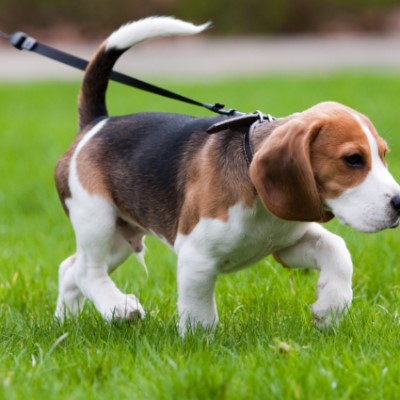Common Reasons for Surrender
An extremely stubborn breed, Dachshunds require time, patience, and consistency in training. Some people adopt a Doxie simply because they are so cute. A few weeks after the novelty wears off and the reality sets in that house training isn’t going to happen overnight, the owner takes the Dachshund to a shelter or to a rescue. Many times, Dachshunds are surrendered through no fault of their own—a new baby arrives, the family moves and doesn’t take him, or the family simply cannot afford the financial costs of having a dog.
Pros
When you befriend a Dachshund, you’ve made a friend for life. Your Dachshund will likely want to sleep in bed with you, sit next to you or lie on your lap while you’re watching TV, greet you enthusiastically when you return home, and sit below your feet at dinnertime. Doxies are extremely loyal and will literally fight to the death to protect you.
Cons
Don’t let the Dachshund’s adorable face fool you. They’re a stubborn and clever breed that can make training a challenge, and they will try to outsmart you at every turn. More than one Dachshund owner has experienced a Doxie who pretends to relieve himself outside, just to receive a treat or to be allowed to go back inside. An unhappy Dachshund won’t be afraid to show his feelings and may chew your shoes to let you know he’s not happy you left him alone all day.
Diet
Be extremely careful with your Dachshund’s diet. Because of a propensity for back problems and easy weight gain, Dachshunds require a high quality food from a pet store. If you feed a higher quality food, which is generally more expensive, you’re going to feed less each day. Treats should be monitored very carefully and given sparingly, if at all. You may want to feed your Doxie vegetables as a treat and, if he needs to gain weight, green beans to supplement his meals.
Exercise
Doxies don’t need a lot of exercise. Most are couch potatoes, but you will find an occasional hyper Dachshund. Because they adapt easily, Dachshunds will happily do what you want to do, whether it’s going for an evening stroll or sitting around watching TV all night.
Possible Health Problems
Dachshunds are notorious for back and teeth problems. Back problems can be the result of a genetic defect, which occurs with bad breeding. To avoid back problems, make sure your Doxie does not become overweight. Don’t allow him to jump up and down from furniture; consider providing him with a step to get onto and off of the furniture, and be careful how much he runs down the stairs.
Because Dachshunds have bad teeth, take your Doxie to the vet at least once a year. When he turns three, be sure to take him to the veterinarian for dental exams, a scale, and cleaning. By doing so, you may be able to prevent your dog needing his teeth pulled once he gets older.
Grooming
No brushing is necessary if you have a short-haired Dachshund. If you have a wire hair or a long hair Doxie, you’ll need to brush him once a week. A wire hair Dachshund will need his hair stripped once a month—a groomer can do this or show you how to do this on your own.
Because Dachshunds don’t typically smell, your dog will only need a bath once a month. You can use a pet shampoo for your Dachshund, but baby shampoo is just as gentle and works just as well.
Training
Be prepared to work with your Dachshund to ensure successful training. A stubborn but intelligent breed, your Dachshund will try to outsmart you when he gets the chance. The secret to success is to outsmart your Doxie while letting him think he’s actually outsmarted you. Go outside when your Dachshund is going to relieve himself and give him a treat immediately after he does so. Do not stand in the house and give him a treat when he comes in the house. Doing so only makes him think he’s being rewarded for coming inside. Always use positive reinforcement with your Doxie and be patient. Housetraining success will happen if you remain consistent.
Entertainment
Your Dachshund just wants to be with you and will be content to go for a walk, run in the backyard, take a trip to the dog park, or just chill out together in front of the television. Doxies often like to play with balls and other toys, and some will get a burst of energy and zip around the house before plopping down in the sun for a nap.
We want to thank All American Dachshund Rescue for help with this profile.




